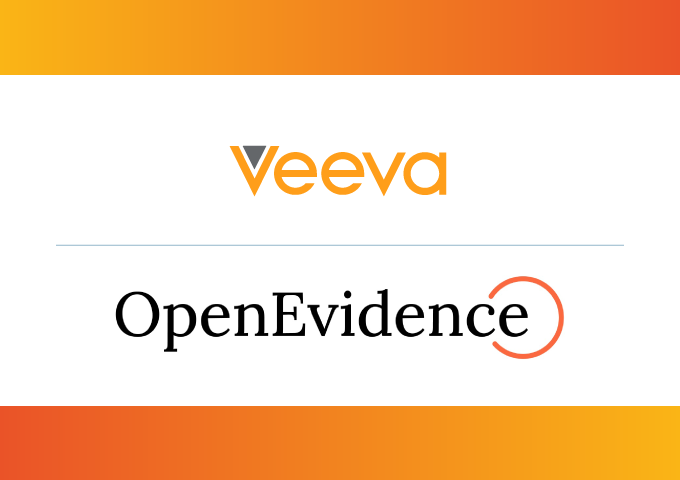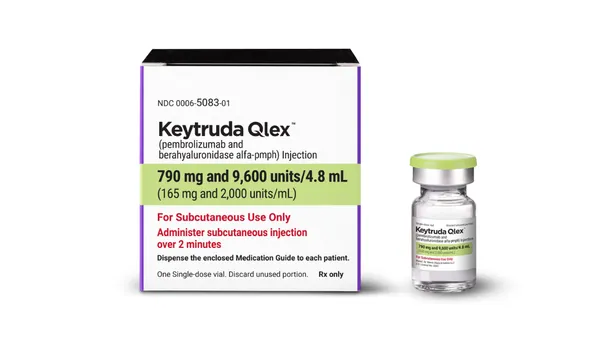Pharma Trax Sales, marketing, And R&D Trends affecting the healthcare industry Opportunities for Online Medical Education in Physicians’ Daily Practices Pharmaceutical companies planning to invest in online continuing medical education (eCME) need to assess the reasons physicians are using eCME and the growing opportunities to reach physicians through this channel, say researchers from Datamonitor. A Datamonitor report, Online CME: A tool for the pharmaceutical marketer, determined that pharmaceutical companies should tailor their marketing strategies to reach physicians who use eCME for professional research purposes rather than academic requirements. eCME, which currently has low physician participation rates, should be promoted through existing marketing strategies run by pharmaceutical companies, for example, through e-detailing via their salesforce teams. A survey of 470 physicians in France, Germany, Italy, Spain, the United Kingdom, and the United States found that 35% of respondents said legal requirements were the least important factor to influence their decision to participate in CME. Only 26% said this factor was very important, while 56% said the need to increase their depth of treatment knowledge was very important. Datamonitor research also shows a trend between physicians’ use of eCME programs and their interest in participating in e-detailing. On average, across the six countries, 62% of physicians who have used or would like to use e-detailing have used eCME while only 33% of physicians who have no experience of e-detailing have used eCME. Researchers say this presents an opportunity for pharmaceutical companies. Companies already have access to physicians who have participated in e-detailing and can promote eCME through this channel. Prescription Drug Sales Increased in 2003 In 2003, sales of U.S. prescription drugs grew 11.5% to $216.4 billion, compared with $194 billion in sales the previous year, according to a recent report by IMS Health. Prescription product sales data are derived from the IMS National Sales Perspectives’ service and reflect wholesale prices. Generic and biotechnology drug dollar sales were key contributors to 2003 pharmaceutical sales results. Generic dollar sales grew by more than 22% and biotechnology drug sales grew by 22% as well. Also affecting results last year were the impact of prescription to over-the-counter (OTC) switching, continuing safety concerns about the use of hormone replacement therapy (HRT), and the growth of reimportation of prescription drugs from Canada. IMS estimates U.S. reimportation of prescription pharmaceuticals from Canada was equivalent to $1.1 billion in U.S. dollars (based on U.S. prices) last year. Looking forward to 2004 results, IMS predicts the U.S. pharmaceutical industry will continue to grow at a solid and steady rate of between 11% and 12%. This projected rate remains faster than the global growth rate, which is projected to be between 8% and 11% (compounded) through 2007. New product innovation, population demographics, the Food and Drug Administration’s acceleration of new product approvals, and an attractive list of potential blockbusters will help to drive this growth. Top innovative products expected in 2004 in terms of sales potential include Eli Lilly’s Cymbalta for depression, Forest’s Namenda for moderate-to-severe Alzheimer’s disease and vascular dementia, and Genentech’s Avastin for colorectal cancer. IMS forecasts about 30 new chemical/molecular entities will be launched in the United States during 2004, with a dozen products having the potential to reach blockbuster status. Sales increases from these 2004 launches may, however, be offset by continuing generic penetration. “2004 results will hinge on innovation, new products, the introduction of Medicare discount cards, and trends in cost containment,” says Paul Wilson, VP of IMS Statistical Services. “It looks to be another strong and exciting year for pharma.” Successful Pharmacogenomics Business Models Can Increase the Bottom Line for Pharma Companies The tools for pharmacogenomics carry the promise of achieving improved drug safety, earlier attrition rates, decreased drug-development costs, a reduced drug-development cycle, and resuscitation of failed drugs. Delivering on these promises will lead the way toward longer patent life and greater profits for new drugs. The challenge, and opportunity, for pharmaceutical companies is to figure out how to deploy the appropriate pharmacogenomics strategy into the drug-sales model to facilitate maximum return. Successful Pharmacogenomics Business Models, a report published by Cambridge Healthtech, provides a theoretical framework to evaluate pharmacogenomics initiatives within pharmaceutical companies. These initiatives include: determining situations when pharmacogenomics is viable within the current and future large pharmaceutical drug-development model; determining requirements for success for each viable pharmacogenomics strategy; and understanding the implications for the pharmaceutical and diagnostics industries. The report provides a framework to demonstrate how a company can enable a pharmacogenomics business model within its respective enterprise. The steps include: determining the characteristic of the innovation; determining true advancement or incremental change; assessing the consequences of the advancement via an experiment; finding a viable initial market for the disruptive technology; carving out responsibility for implementation; and maintaining independence of operations. The consumer, in concert with the physician, has been found to exert a strong influence on the acceptance of change in the traditional drug model. If modern drug development and delivery are to be improved by pharmacogenomics, then the involvement of insurers and physicians must occur. In the pharmacogenomic environment, the steps that occur after new drug application approval take on higher importance compared with nonpharmacogenomics drug-delivery models. The report also identified a leading set of competitors as strong contenders to provide pharmacogenomics products and services: Genaissance Pharmaceuticals, Gentris, and Quest Diagnostics are the three key service providers in the clinical market that encompass DNA purification, DNA banking, and genotyping. These key players compete across multiple criteria (quality, protocol adherence, and price) for business. But the key differentiator for customers has been found to be quality. Disease-Management Tools Will Drive CRM The pharmaceutical industry’s ability to develop disease-management tools for key brands will drive long-term consumer relationships, according to a recent report by Cutting Edge Information. Customer attrition through noncompliance is an ongoing challenge for the pharmaceutical industry. To combat this issue, many drug makers implement disease-management programs to engage and educate patients. These programs help consumers understand their medical conditions and the implications of prescription noncompliance. This approach is a savvy move for companies trying to recreate themselves as healthcare partners and not just medicine manufacturers. “Technology has made disease-management programs possible in ways that weren’t available 10 years ago or even five years ago,” says Eric Bolesh, senior analyst at Cutting Edge Information. “The Internet and its interactive capabilities have truly allowed disease-management programs to mature.” No single company has mastered compliance, disease management, or other customer-focused tactics, researchers say. As in most sectors, the pharma industry has traditionally embraced a product-focused philosophy. Technology, mature markets, and a thirst for continued growth, however, have turned the industry toward consumer-oriented strategies, programs, and philosophies. Pharmaceutical companies that adopt disease management with the goal of organizing and directing healthcare services improve health outcomes and lower costs. This can result in increased patient compliance, which is a critical element in maintaining and encouraging long-term customer value. Study Identifies Top Pharma Salesforces IN 2003 For the ninth consecutive year, Pfizer’s pharmaceutical sales organization placed first overall in Verispan’s Pharmaceutical Sales Force Structures & Strategies (SFSS) 2003-2004 survey of U.S. physicians. Verispan surveys physicians among nine core medical specialty groups: general/family medicine practitioners, internists, pediatricians, orthopedic surgeons, obstetrician/gynecologists, psychiatrists, general surgeons, gastroenterologists, and cardiologists. With the industry’s largest salesforce and highest number of blockbuster products across a range of therapeutic categories, Pfizer ranked first among the following individual specialties: emergency medicine specialists, general/family medicine practitioners, internists, nurse practitioners, physical medicine and rehabilitation specialists, physician assistants, psychiatrists, urologists, cardiologists, and orthopedic surgeons. In another Verispan study, the fall 2003 Managed Care Medical Director Promotional Audit, GlaxoSmithKline was ranked as the best overall pharmaceutical company by managed-care medical directors. This audit is based on the responses of medical directors who represent a large portion of American lives covered by HMOs. These influential personnel reported promotional activity by pharmaceutical companies over an eight-week period in the fall of 2003. They also rated pharmaceutical companies on their ability to meet managed care’s needs in five areas: clinical objectivity, value-added services, disease management, account personnel, and pharmaceutical company strategy. Medical directors cited GlaxoSmithKline’s constant support and superior account personnel as reasons for rating the company highly. Pfizer ranked first for value-added services and placed second in all other assessment areas. Pfizer’s greatest improvements came in the disease-management and company-strategy areas. Medical directors also recognized Pfizer for providing solid clinical information. Among managed-care pharmacy executives, Novartis remained No. 1 overall in Verispan’s fall 2003 Managed Care Pharmacy Executive Promotional Audit on the strength of its account personnel and because of its eagerness to partner and support managed care. Partnerships Advantageous to Start-up Companies Lack of competitive marketing skills and experience in conducting clinical trials is a major drawback for research-based start-up biotechnology companies. Strategic partnering by small biotechnology companies with larger pharmaceutical companies to aid commercialization of their proprietary biotechnology products can help overcome this problem, according to analysis by Frost & Sullivan. Frost & Sullivan’s report, U.S. Biotechnology Pipeline Analysis, reveals that revenue from products in the pipeline totaled $210 million in 2003. Revenue from biotechnology drugs is projected to reach $13.79 billion by 2009. “While milestone payments, license fees, and sponsored research under collaboration agreements can form a significant source of income for smaller biotechnology companies, mergers, acquisitions, and partnerships are expected to be a regular feature in this market,” says K.V. Anantharaman, a research analyst at Frost & Sullivan. Tactical mergers and joint ventures will help established biotechnology companies enhance their product portfolios and leverage technology breakthroughs. Smaller biotechnology companies can benefit from the established company’s experience in meeting approval from the Food and Drug Administration and organized sales policies to successfully handle product commercialization. “Currently more than 370 biologic drugs are under development, and about 13 monoclonal antibodies are in advanced stages of clinical trials,” Mr. Anantharaman says. “Manufacturing capacity is likely to become one of the critical challenges as the demand exceeds supply.” According to research analysts, to formulate new techniques to tackle this issue, alternate forms of manufacturing such as plant-based pharmaceutical production can be devised or transgenic animals can be evaluated. Orphan Drug Sales to Reach $43 Billion by 2008 The total worldwide market for orphan drugs, including sales in nonorphan applications, exceeded $28 billion in 2003, according to a report from Business Communications Company Inc. The report, Orphan Drugs: Success Stories and Market Strategies, found this market is expected to grow at an average annual growth rate (AAGR) of 9.1% to reach $43.6 billion in 2008. As a percentage of overall global drug sales, orphan drugs are expected to increase their share from 7.0% in 2003 to 7.5% in 2008. There are an estimated 6,000 rare diseases that collectively affect 25 million Americans. About 70% of these diseases are caused by genetic defects that have life-threatening consequences. The Orphan Drug Act was implemented in 1983 to provide incentives for companies to develop products to treat diseases that annually affect fewer than a dozen people to a few hundred thousand people in the United States. The FDA defines an orphan drug as a product that treats a disease affecting 200,000 or fewer Americans. In 2003, some products that originally were approved as orphan drugs each had sales in excess of $1 billion. These included Biogen Idec’s Avonex (interferon beta-1a), indicated for the treatment of multiple sclerosis; Amgen’s Epogen (epoetin alfa), indicated originally for the treatment of anemia associated with human immunodeficiency virus (HIV) infection; Schering Corp.’s Intron A (interferon alfa-2b, recombinant), indicated originally for the treatment of Kaposi’s sarcoma; Amgen’s Neupogen (filgrastim), indicated originally for the treatment of neutropenia associated with bone marrow transplant; Centocor’s Remicade (infliximab), indicated originally for the treatment of Crohn’s disease; and Genentech and IDEC Pharmaceuticals’ Rituxan (rituximab), indicated originally for the treatment of non-Hodgkin’s B-cell lymphoma. The largest therapeutic markets for orphan drugs are cancer, cardiovascular diseases, blood disorders (particularly anemia and neutropenia), genetic disorders, immune disorders, and neurological disorders (primarily multiple sclerosis). As we predicted, 2003 pharmaceutical growth remained constant in comparison with 2002. This solid performance demonstrates the strength of the pharmaceutical industry given the economic climate this year and the scrutiny the industry has undergone by the government, the news media, and the general public. U.S. Prescription Market Share by Distribution Channel in 2003 2003 Sales % Growth Market Share (U.S. $ in Billions) Year-Over-Year In 2003 Billions) Year-Over-Year In 2003 1 Chain Stores/ Mass Merchandisers $78.6 11.4% 36.3 2 Independents 31.6 7.5 14.6 3 Mail Service 28.6 15.5 13.2 4 Nonfederal Hospitals 22.9 6.2 10.6 5 Clinics 19.5 22.1 9.0 6 Food Stores 19.3 8.2 8.9 7 Long-Term Care 7.8 17.3 3.6 8 Federal Facilities 3.4 13.2 1.6 9 Home Health Care 2.2 6.3 1.0 10 HMO (Staff Model) 1.5 2.9 0.7 11 Miscellaneous 0.9 10.3 0.4 Note: Wholesale prices, sales include prescription products only. Results for the Mail Service channel have not been projected, but IMS estimates they represent about 90% of sales. OTC insulins have not been included. Source: IMS Health, Fairfield, Conn. For more information, visit imshealth.com. Total $216.4 11.5% 100 Top 10 Therapeutic Classes by U.S. Prescription Sales in 2003 2003 Sales % Growth (U.S. $ in Billions) Year-Over-Year 1 Cholesterol Reducers $13.9 10.9% 2 Proton Pump Inhibitors (anti-ulcerants) 12.9 12.6 3 SSRI/SNRI (antidepressants) 10.9 11.9 4 Antipsychotics 8.1 22.1 5 Erythropoietins (anemia) 7.4 16.3 6 Seizure Disorders 6.9 24.4 7 COX-2 Inhibitors (anti-arthritics) 5.3 9.1 8 Calcium Blockers 4.4 (0.5) 9 Antihistamines 3.5 (28.3) 10 Codeine & Combinations 3.2 14.3 Note: Wholesale pr ces, sales include prescription products only. Source: IMS Health, Fairfield, Conn. For more information, visit imshealth.com. Total $76.5 10.5% Total $76.5 10.5% Total $76.5 10.5% 2003 2002 Company Ranking Ranking Pfizer 1 1 GlaxoSmithKline 2 2 Wyeth-Ayerst 3 5 Merck 4 3 AstraZeneca 5 8 Novartis 6 9 Eli Lilly 7 13 Schering-Plough 8 16 Pharmacia 9 14 Bristol-Myers Squibb 10 10 Note:* Results based on surveys of physicians in the following medical specialty groups: general/family medicine practitioners, internists, pediatricians, orthopedic surgeons, obstetrician/gynecologists, psychiatrists, general surgeons, gastroenterologists, and cardiologists. Source: Verispan, Yardley, Pa. For more information, visit verispan.com. Most Esteemed Salesforces Sales of Drugs Approved for Orphan Diseases ($ Millions) AAGR % 2002 2003 2008 2003-2008 $25,181 $28,190 $43,625 9.1% AAGR % 2002 2003 2008 2003-2008 $365,640 $401,610 $585,300 7.8% AAGR % 2002 2003 2008 2003-2008 6.9% 7.0% 7.5% 1.2% Source: Business Communications Company Inc., Norwalk, Conn. For more information, visit bccresearch.com. Sales of drugs with orphan indications Global sales of all drugs % Sales of drugs with orphan indications of total global drug sales Business Communications Company Inc., Norwalk, Conn., studies the major market, economic, and technological developments that characterize industry sectors to produce industry reports, newsletters, and conferences. For more information, visit bccresearch.com. Cambridge Healthtech Institute, Newton Upper Falls, Mass., was founded in 1992 and currently runs more than 50 conferences per year in the life-sciences area. For more information, visit chadvisors.com. Cutting Edge Information, Durham, N.C., provides innovative, implementable research and consulting to the pharmaceutical and financial services industries. For more information, visit cuttingedgeinfo.com. Datamonitor Plc., New York, is an international strategic market analysis company helping companies across the automotive, consumer, energy, financial- services, healthcare, and technology markets. For more information, visit datamonitor.com. Frost & Sullivan, San Antonio, is an international consultancy firm that serves a broad spectrum of industries and provides strategic consultancy, market intelligence, and management training. For more information, visit frost.com. IMS Health, Fairfield, Conn., offers leading-edge business intelligence products and services that are integral to clients’ day-to-day operations, including marketing effectiveness solutions for prescription and over-the-counter pharmaceutical products, sales optimization solutions to increase salesforce productivity, and consulting and customized services that turn information into actionable insights. For more information, visit imshealth.com. Verispan, Yardley, Pa., is a healthcare informatics joint venture of Quintiles Transnational Corp. and McKesson Corp. and provides a broad array of information products and services to the healthcare industry. For more information, visit verispan.com. Follow up
An article from











